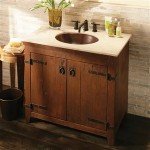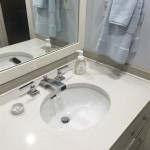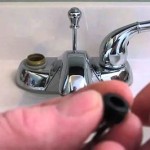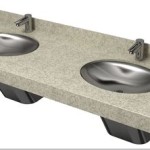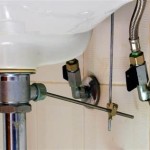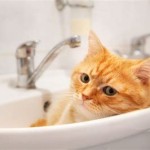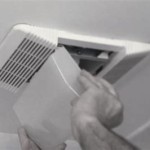Why Are There Gnats in the Bathroom?
Gnats are small, flying insects that can become a significant nuisance, especially when they appear in large numbers inside the home. The bathroom, in particular, is a common breeding ground for these pests. Understanding why gnats thrive in this specific environment is crucial for effective prevention and elimination. Several factors contribute to the presence of gnats in the bathroom, ranging from readily available food sources to favorable environmental conditions.
Often, the term "gnat" is used broadly to describe various types of small flies, including fruit flies, drain flies, and fungus gnats. Each of these species has slightly different habits and preferences, which influences their attraction to the bathroom. Accurate identification of the specific type of gnat is essential for implementing targeted control measures.
Understanding Common Gnat Species Found in Bathrooms
Identifying the specific type of gnat infesting a bathroom is the first step towards effective control. Though commonly referred to as gnats, several distinct species may be present, each with unique habits and requirements. This knowledge helps in locating their breeding grounds and implementing appropriate eradication strategies.
Fruit Flies: Scientifically known as Drosophila melanogaster, fruit flies are commonly attracted to ripe or decaying fruits and vegetables. While not directly related to bathroom conditions, they can be drawn to sugary residues left behind from spilled drinks or forgotten fruit-scented soaps and shampoos. Fruit flies are characterized by their reddish-brown color and relatively slow, erratic flight patterns. These gnats are primarily drawn indoors via contaminated fruits and vegetables brought inside the home, but any sugary substance left exposed can sustain a population.
Drain Flies: Also known as moth flies or filter flies, drain flies (Psychodidae family) are frequently found in bathrooms due to their affinity for stagnant water and organic matter buildup in drains. These flies are small, fuzzy, and have a distinctive moth-like appearance. Their larvae thrive in the slimy biofilm that accumulates inside drains, feeding on decaying organic waste. Drain flies are poor fliers, often seen hopping or fluttering short distances. Their presence indicates a significant accumulation of organic matter within the plumbing system.
Fungus Gnats: Belonging to the families Sciaridae and Mycetophilidae, fungus gnats are typically associated with houseplants. However, they can also be found in bathrooms if there are any potted plants present or if the bathroom provides a consistently damp environment that supports fungal growth. These gnats are small, dark-colored, and have long legs and antennae. Their larvae feed on fungi and decaying organic matter in soil or similar damp environments. A leaky pipe or consistently damp shower stall can create conditions conducive to fungus gnat proliferation, even without houseplants.
The Role of Moisture and Organic Matter
The presence of moisture and the availability of organic matter are primary factors contributing to gnat infestations in bathrooms. Bathrooms are naturally humid environments, and areas such as sinks, showers, and toilets provide ample opportunities for water to accumulate. This moisture, when combined with organic debris, creates an ideal breeding ground for many gnat species.
Drains are a particularly common breeding site for drain flies. The slimy biofilm that lines the inner surfaces of drains consists of decaying organic matter, including hair, soap scum, and food particles. This biofilm provides a rich food source for drain fly larvae. Even seemingly clean drains can harbor significant accumulations of this organic matter, making them a haven for these pests.
Leaks, even minor ones, can contribute to the problem. A dripping faucet or a leaky pipe under the sink can create a persistently damp environment that attracts gnats. This excess moisture can also promote the growth of mold and mildew, which can serve as a food source for some gnat species, particularly fungus gnats.
Beyond drains, other areas in the bathroom can also accumulate moisture and organic matter. Shower stalls, particularly corners and grout lines, can harbor mold and mildew. Spilled toiletries, such as shampoo or soap, if not cleaned up promptly, can also attract gnats. Even damp towels and bath mats can provide a suitable environment for gnat larvae to develop.
Furthermore, the type of cleaning products used in the bathroom can inadvertently contribute to the problem. Some cleaning products may leave behind a residue that serves as a food source for gnats. Others may not be effective at removing the organic matter that accumulates in drains and other areas.
Entry Points and Environmental Factors
While the bathroom environment creates a favorable habitat for gnats, understanding how these insects enter the home is equally important. Identifying and sealing potential entry points can significantly reduce the likelihood of an infestation.
Gnats can enter the home through a variety of openings, including cracks in walls, gaps around pipes, and poorly sealed windows and doors. Even small openings can provide access for these tiny insects. Inspecting the bathroom for potential entry points and sealing them with caulk or weather stripping can help prevent gnats from entering.
Plumbing systems can also serve as a direct pathway for gnats to enter the bathroom. Drain flies, in particular, can emerge from drains connected to sewer lines. A damaged or improperly sealed drainpipe can provide an easy route for these flies to enter the bathroom.
Air currents can also play a role in attracting gnats to the bathroom. Open windows and doors can allow gnats to be drawn in by odors emanating from the bathroom, such as the scent of shampoo or the smell of decaying organic matter in drains. Using screens on windows and keeping doors closed can help to prevent gnats from entering.
The overall cleanliness of the home can also influence the likelihood of a gnat infestation in the bathroom. If other areas of the home are not properly cleaned and maintained, gnats may be more likely to be attracted to the bathroom in search of food and breeding sites. Regularly cleaning and disinfecting all areas of the home, including the kitchen and other potential problem areas, can help to reduce the overall gnat population.
Outdoor environmental conditions can also influence the presence of gnats in the bathroom. During periods of warm, humid weather, gnat populations tend to be larger, increasing the likelihood that these insects will find their way indoors. Heavy rain or other weather events can also drive gnats indoors in search of shelter.
The presence of nearby breeding sites, such as stagnant water in gutters or piles of decaying leaves, can also contribute to the problem. These outdoor breeding sites can serve as a source of gnats that eventually find their way into the home. Removing or eliminating any potential outdoor breeding sites can help to reduce the number of gnats entering the bathroom.
Finally, the presence of houseplants in or near the bathroom can increase the risk of fungus gnat infestations. Fungus gnats are attracted to the damp soil and decaying organic matter in potted plants. If houseplants are present, ensuring proper drainage and avoiding overwatering can help to prevent fungus gnat infestations. Using a soil covering, such as sand or pebbles, can also help to reduce the attractiveness of the soil to fungus gnats.
How To Get Rid Of Gnats Drain Flies Fruit And Fungus
Jab Plumbing Solutions Blog Blocked Drain Plumbers

Gnat In Bathroom Leia Bugguide Net

Fruit Flies In The Bathroom Get Rid Of Them Michael S Plumbing Orlando

How To Get Rid Of Drain Flies Moth And Prevent An Infestation Pest Defence

The Simple Trick To Stop Pesky Gnats From Taking Over Your Drains

How To Rid Of Drain Flies Forbes Home

Identify Tiny Bugs In Bathroom And Get Rid Of Them For Good

5 Easy Ways To Get Rid Of Drain Flies Fast

Fungus Gnats Doityourself Com Community Forums
Related Posts
